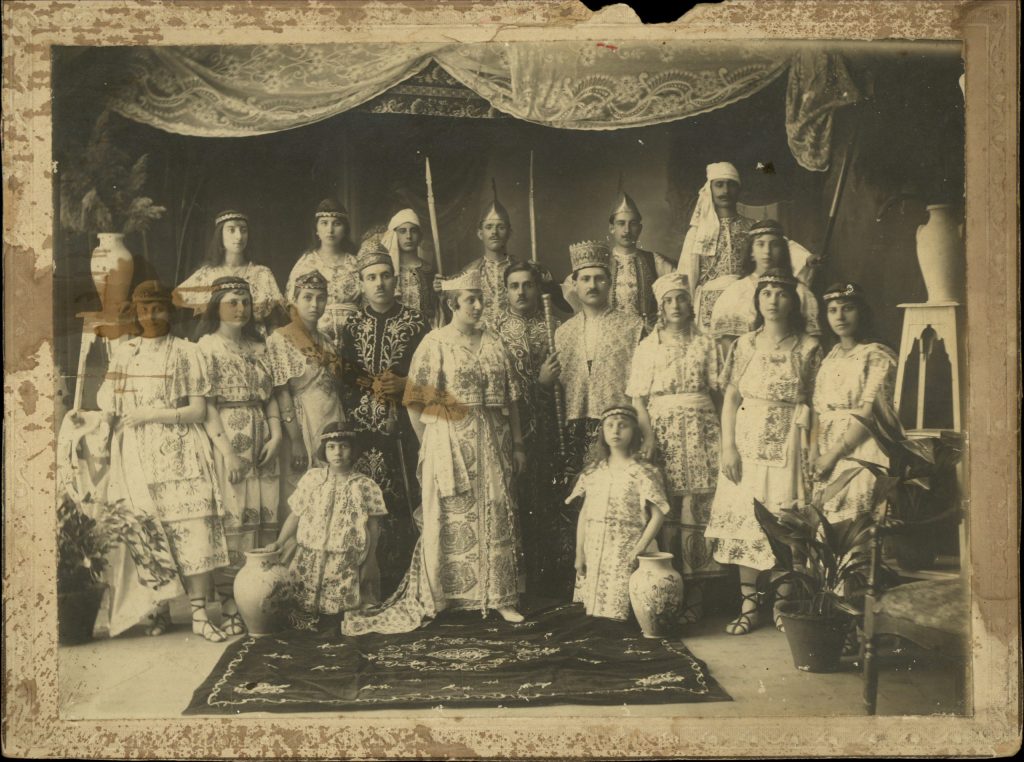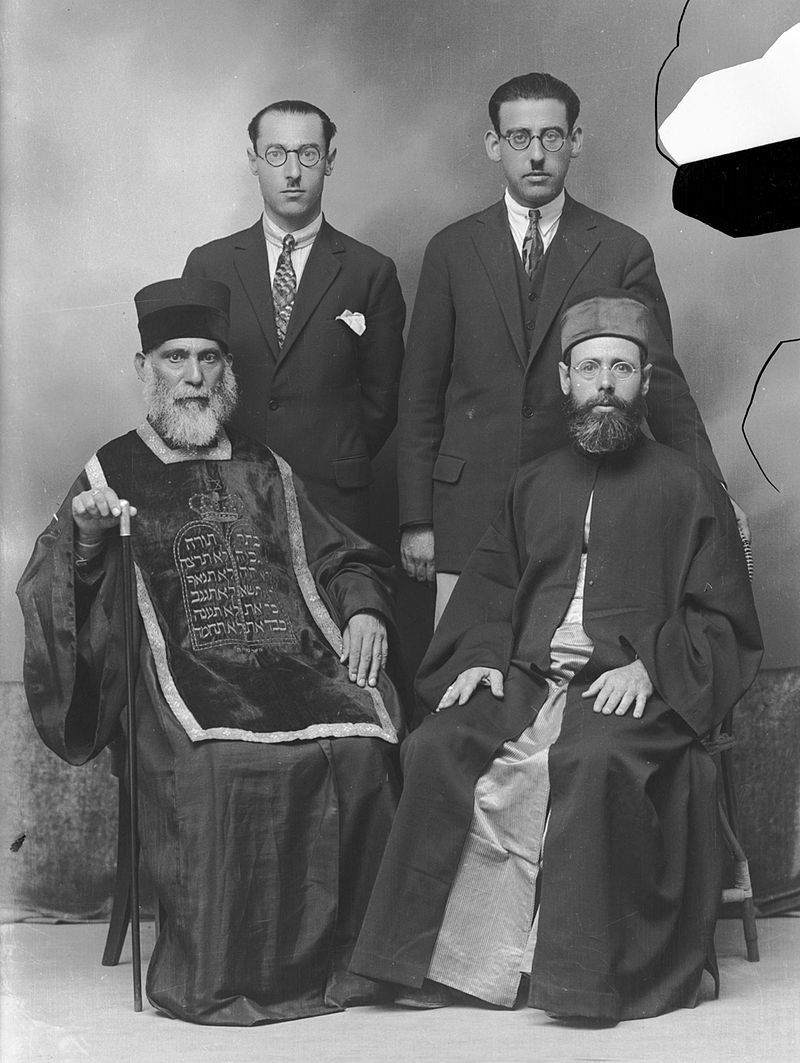
The Romaniote Jews, or the Romaniotes, are a Greek-speaking ethnic Jewish community native to Greece and the Eastern Mediterranean. They are one of the oldest Jewish communities in existence and the oldest Jewish community in Europe.
Large communities were located in Thessaloniki, Ioannina, Arta, Preveza, Volos, Chalcis, Chania, Thebes, Corinth, Patras, and on the islands of Corfu, Crete, Zakynthos, Lesvos, Chios, Samos, Rhodes, and Cyprus, amongst others.
The Romaniotes have been, and remain, historically distinct from the Sephardim, some of whom settled in Ottoman Greece after the 1492 expulsion of the Jews from Spain.

David Saltiel, President of the Jewish Community of Greece and vice-chair of the World Jewish Congress recently said during a lecture attended by Greek Reporter that the Romaniote community lived for centuries alongside the Sephardic and Ashkenazi communities in Greece. They constitute a completely unique branch of Jewry.
“Despite the fact that they were almost totally decimated during the Holocaust,” they persevered, Saltiel explained. They constitute the single oldest community of Jews in the entire European diaspora.
Archaeologist Dr. Zanet Battinou, a member of the Romaniote community herself, said that the Romaniote Jews maintained a community there since the 4th century BC. Adopting the Greek language but keeping Hebrew words, they created a unique dialect of both written and spoken language as seen in inscriptions throughout the area.
They combined their own traditions and customs into unique folkways while preserving Hebrew for worship. There is evidence of a synagogue in the area built as early as the first century BC.
Their community remarkably remained intact despite all the many upheavals of the Greek state until the Second World War.
Greece’s Ioannina became a focal point for the Romaniote Jews
Ioannina became a significant urban center beginning in the eighth century, even attracting Jews from other areas. The first clear historical reference to a Jewish population in the city was seen in the 14th century in the form of a government decree.
Living under Ottoman rule beginning in the 1400s, the Jewish population of the area was left more or less in peace during those centuries, allowed to practice their religion and their trades. In the 16th century, co-religionists even began arriving in Ioannina from Sicily, according to Dr. Battinou.
The population continued to flourish and increase under the rule of Ali Pasha in the 19th century. Most of the Romaniote Jews were involved in trade with small shops and family businesses.
The synagogue, the center of the community, was within the Jewish quarter within the castle walls of the city, and remarkably, it still exists today. Another synagogue, built for the Italian Jews, was completely destroyed in WWII.

Finely-worked silver a mark of Ioannina culture
The synagogues housed many treasures, including ornate oil lamps and Torah scroll finials, all finely-worked silver, which became the hallmark of Ioannina. Silver dedicatory plaques were also common in the city, becoming another well-recognized mark of the city’s culture.
A silver Megillot, or parchment scroll holder, also of finely-worked silver, holds the story of Esther, recounted each year during the feast of Purim. One of the only surviving such scroll holders in existence, it is in the collections of the Jewish Museum of Greece.
Although the Romaniotes used colloquial Greek as their everyday language, “they wrote it in Hebrew characters, Hellenizing the Hebrew syntax, leading to the birth of the Judeo-Greek idiom—an aspect of which has survived down to our day,” Dr. Battinou explained.
Unique Liturgical songs, and yearly festivals important part of Romaniote life
Special liturgical songs, chanted on festivals and holy days, were also recorded in books in the unique dialect with charts showing the occurrence of the festivals throughout the year; some of these survive today.
In a heartwarming aside, Dr. Battinou shared that the women of Ioannina were well-known for their immaculate housekeeping skills, whitewashing their courtyards every single Friday afternoon.
On Fridays, their Christian neighbors would light candles for their Jewish friends so they would not have to work at all on the Sabbath. Later on, after services, the Romaniote families would take long walks by the lake of Pamvotis in the beautiful city or go on excursions into the countryside.
In the late 1800s, as many as 4,000 of the residents left for the greener pastures of Palestine or New York City. After the Balkan Wars, the city of Ioannina became a part of the modern state of Greece, and Jews “played an active role in the social and political life” of the city, Battinou said.
181 people survived from a community of thousands
“When the Axis Powers gained control of Greece,” she related, “Ioannina came under Italian administration, and that situation was relatively benign for the community as they were left in peace.”
However, in July of 1943, a German division arrived and took charge of the city, she explained — which was the death knell for many residents of the historic community.
On March 25, 1944, Battinou stated, trucks arrived in Ioannina which were meant to transport the Jewish residents of the city — whose ancestors had lived there for nearly two thousand years — to their doom.
“1,870 Jews were loaded onto the trucks and taken through Trikala to Larissa and from there crammed onto trains and taken to Auschwitz,” Battinou states. Ninety-two percent of the Jews of Ioannina were never to see their homes again.
At the end of the war, she said, the Jewish community “numbered only 181 souls. And even many of those left for the United States or Israel. Still, however, “they never lost touch with their hometown, Battinou stated, “maintaining their sense of belonging and community spirit that common roots produce.”
Rich history of the Romaniote Jews of Greece preserved in NYC
Dr. Mimis Cohen, the founder of the American Friends of the Jewish Museum of Greece, related in the lecture a bit about the history of the Romaniote Jews who emigrated to New York City who were not considered “real Jews” by the dominant Ashkenazi community because they did not speak Yiddish.
The Sephardic Jews of the city took pity on them, at least allowing the Romaniotes to be buried with appropriate Jewish rites.
The only remedy for this situation, they realized, was to form their own synagogues, which they did at once. One of them, the Kehila Kedosha Janina Synagogue and Museum, is still in existence and thriving today.
In one example of the passing on of Romaniote traditions, Kehila Kedosha Janina offers reproductions of Romaniote Alefs.
An Alef is a type of birth certificate and amulet that was traditionally created for baby boys to help protect them during the forty days of their lives.
The synagogue states that this is the first time since WWII that new Alefs have been reproduced for their community and that it is currently the only source in the world offering brand new customized Alefs.
Cohen also lauded author Rae (Rachel) Dalvin, who wrote the scholarly work The Jews of Ioannina, as another force for preserving the history of the Romaniote Jews. Born in Preveza, she visited Ioannina for some time in the 1930s, gleaning a treasure trove of information on the unique culture there.
Recreating their history, culture (including folk beliefs), unique liturgies, and even musical scores, Dalvin’s seminal work is one of the touchstones for anyone who would like to know more about these fascinating people.
The Romaniote Jewish Community of Ioannina: A Journey Through Time and Two Nations was the subject of a fascinating webinar hosted in 2021 by the American embassy in Athens and the Consulate in Thessaloniki.
The lecture was the 15th annual event in memory of David Tiano, a Consulate employee who was tortured and executed by the occupying German forces in December of 1941. Tiano had been a descendant of the Romaniote Jews of Ioannina.
The discussion was led by Dr. Zanet Battinou, Archaeologist, Director of The Jewish Museum of Greece; Professor Mimis Cohen MD, the Founding member of the American Friends of the Jewish Museum of Greece and Dr. Moissis Elissaf, the mayor of Ioannina.
Dr. Elissaf, himself a descendant of the historic Romaniote community, is the first Jewish mayor of a Greek city.
For more information on the Jewish Museum of Greece, please see their website, here.
See all the latest news from Greece and the world at Greekreporter.com. Contact our newsroom to report an update or send your story, photos and videos. Follow GR on Google News and subscribe here to our daily email!



